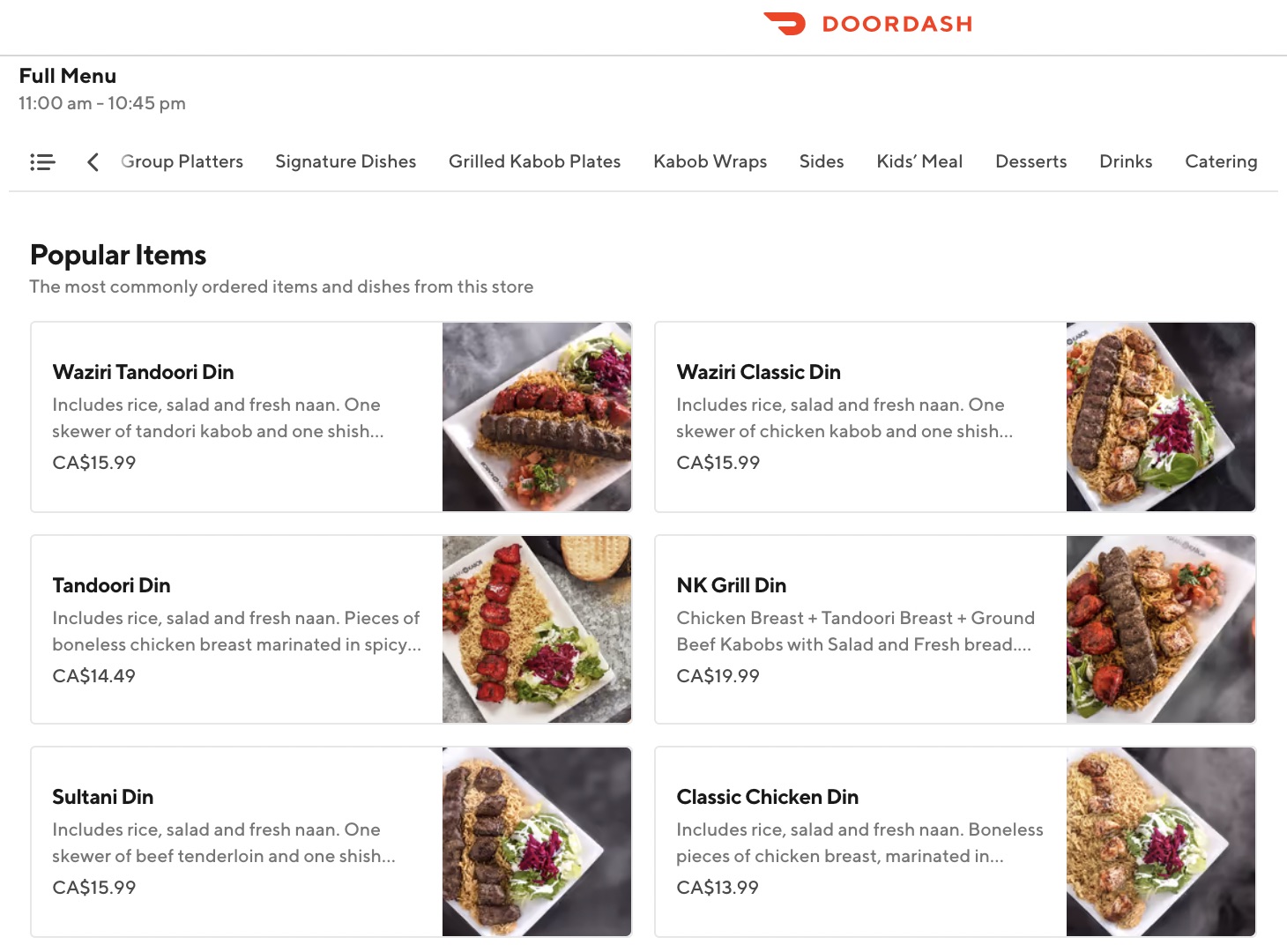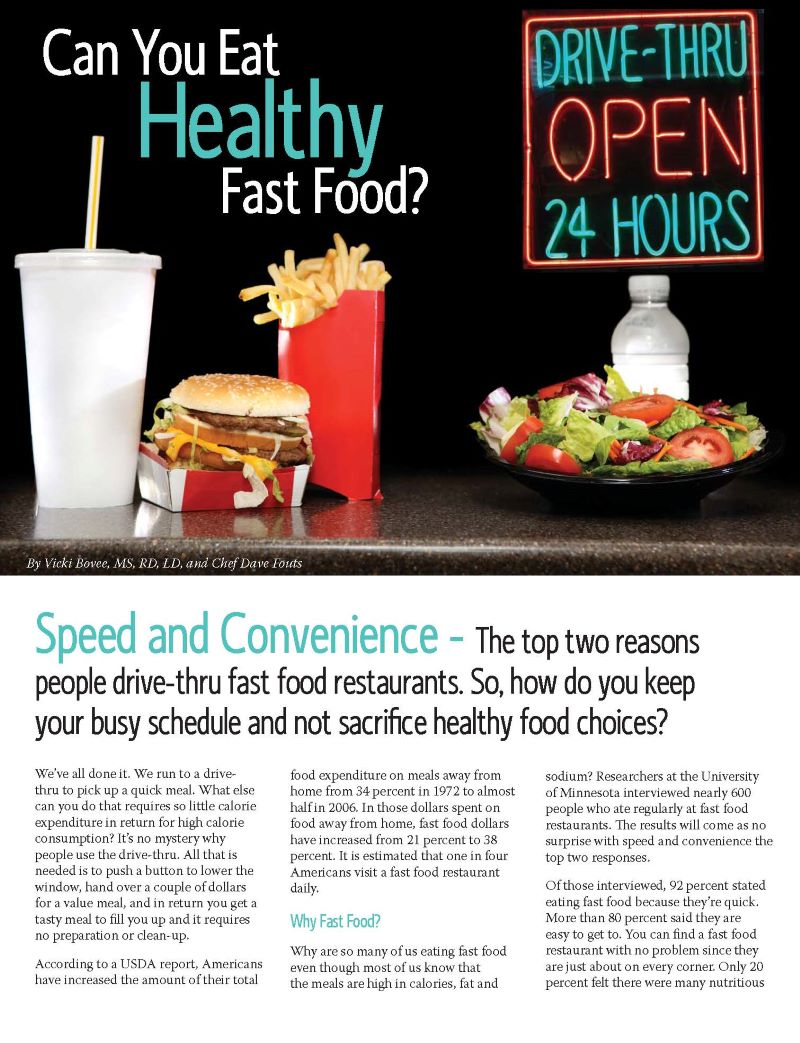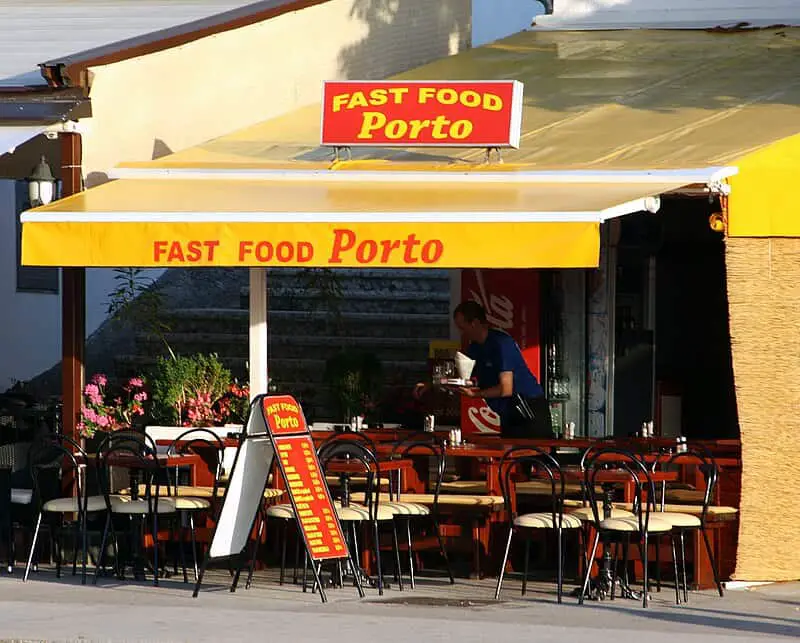For aspiring restaurant owners and entrepreneurs, the fast food industry can be an exciting and profitable venture. However, running a successful fast food restaurant requires careful planning, execution, and consideration of various factors. In this article, we will explore the importance of proper planning and execution, as well as the key factors to consider for success in the fast food industry.
Importance of proper planning and execution
1.Developing a clear business plan: Before opening a fast food restaurant, it is crucial to create a comprehensive business plan. This plan should outline your target market, menu offerings, pricing strategy, marketing initiatives, and financial projections. A well-defined plan will provide guidance and help you make informed decisions along the way.
2.Ensuring efficient operations: Effective operational management is essential for the success of a fast food restaurant. This includes hiring and training staff, implementing streamlined processes, and maintaining quality control. Additionally, investing in the right technology and systems can optimize efficiency and provide a better customer experience.
Factors to consider for a successful fast food restaurant
1.Knowing your target market: Understanding your target audience’s preferences, demographics, and purchasing behaviors is crucial for tailoring your menu, marketing, and overall brand strategy. Conduct market research and stay updated on industry trends to stay ahead of the competition.
2.Delivering exceptional customer service: In the fast food industry, providing excellent customer service is a differentiating factor. Train your staff to deliver friendly and efficient service, always prioritize cleanliness and hygiene, and listen to customer feedback to continuously improve.
3.Consistency and quality: Consistency in food quality, taste, and portion sizes is vital to building a loyal customer base. Use fresh ingredients, develop standardized recipes, and regularly assess and improve your food offerings to ensure high-quality products.
4.Efficient marketing and branding: Develop a strong brand identity and implement effective marketing strategies to attract and retain customers. Utilize social media, online platforms, and traditional advertising methods to increase brand visibility and engage with your target audience.
By focusing on proper planning, efficient operations, understanding your target market, providing excellent customer service, maintaining consistency and quality, and implementing effective marketing strategies, you can increase the chances of running a successful fast food restaurant.

Key Components of a Successful Fast Food Restaurant
Creating a unique and appealing menu
In the competitive world of fast food, having a unique and appealing menu is essential for the success of your restaurant. Here are some strategies to consider:
- Offer a variety of options: Customers appreciate having a range of choices. Include popular items, as well as unique and flavorful dishes that set your menu apart.
- Emphasize quality ingredients: Using fresh and high-quality ingredients can make a significant difference in the taste and overall appeal of your menu. Consider sourcing local and sustainable ingredients whenever possible.
- Accommodate dietary restrictions: With the increasing demand for vegetarian, vegan, gluten-free, and other specialty diets, it is crucial to offer options that cater to these needs. This will attract a wider customer base and help build a positive reputation.
Efficient operations and streamlined processes
Operating a fast food restaurant requires efficient systems and processes to maintain productivity and provide excellent service. Consider the following:
- Standardize procedures: Clearly define and document all procedures, from food preparation to customer service. This helps ensure consistency and reduces the risk of errors or delays.
- Invest in technology: Utilize point-of-sale systems, online ordering platforms, and other technological tools to streamline processes and enhance customer experience. This can improve efficiency and reduce waiting times.
- Train and empower employees: Well-trained and motivated staff are crucial for delivering exceptional service. Provide regular training sessions and encourage employees to take ownership of their roles.
- Maintain a clean and inviting environment: Keep your restaurant clean and well-maintained to create a positive impression on customers. Regularly sanitize surfaces, ensure proper ventilation, and provide comfortable seating areas.
By focusing on creating a unique menu and implementing efficient operations, your fast food restaurant can stand out from the competition and deliver a memorable experience to customers.

Providing Exceptional Customer Service
Importance of friendly and attentive staff
In the fast-paced world of fast food, customer service plays a crucial role in the success of a restaurant. Friendly and attentive staff are essential for creating a positive dining experience and building customer loyalty.
When customers enter a fast-food restaurant, they expect quick service, but that doesn’t mean they want to be treated like just another transaction. Engaging with customers, greeting them with a smile, and addressing their needs and concerns can go a long way in making them feel valued and appreciated. Training your staff to provide exceptional service and ensuring they understand the importance of customer satisfaction is vital.
Utilizing technology for seamless ordering and delivery
In today’s digital age, technology has transformed the way fast food restaurants operate. Utilizing technology for ordering and delivery can enhance efficiency and customer experience.
Implementing self-service kiosks allows customers to place their orders at their own pace, reducing waiting times and increasing accuracy. This frees up staff to focus on other essential tasks, such as preparing and delivering orders promptly.
Furthermore, offering online ordering and delivery options can attract a wider customer base. Many customers prefer the convenience of ordering from the comfort of their own homes or offices. Implementing a user-friendly online ordering system and partnering with reliable delivery services can streamline the process and ensure customer satisfaction.
By integrating technology into your fast food restaurant, you not only enhance efficiency but also cater to the changing needs and preferences of your customers.
Providing exceptional customer service is crucial for running a successful fast food restaurant. By hiring friendly and attentive staff and leveraging technology for seamless ordering and delivery, you can create a positive and satisfying dining experience that will keep customers coming back for more.

Effective Marketing and Promotion Strategies
Targeting the right audience through various channels
To run a successful fast food restaurant, it is crucial to have effective marketing and promotion strategies in place. One key aspect is targeting the right audience through various channels.
- Identify your target audience: Understand who your ideal customers are and what their preferences and behaviors are. This will help you tailor your marketing messages and strategies to resonate with them.
- Utilize social media: Social media platforms such as Facebook, Instagram, and Twitter have a wide reach and provide opportunities to engage with potential customers. Create eye-catching and mouth-watering content to showcase your menu items and promotions. Run targeted ads to reach your specific audience based on demographics, interests, and location.
- Local advertising: Use local advertising channels like newspaper ads, flyers, and billboards to reach out to potential customers in your area. Highlight your unique selling points and any special offers or promotions.
Incentives and loyalty programs
Another effective strategy for running a successful fast food restaurant is to implement incentives and loyalty programs to encourage repeat business and build customer loyalty.
- Offer discounts and deals: Provide special discounts or combo meals at attractive prices to entice customers. This could be daily specials, happy hour discounts, or meal bundles.
- Implement a loyalty program: Reward customers for their repeat business by offering a loyalty program. This could be in the form of a punch card, where customers earn a free item after a certain number of purchases, or a digital loyalty program that tracks points and rewards.
- Personalize customer experience: Use customer data to personalize their experience. Send personalized offers and recommendations based on their preferences and previous orders. This can help create a connection with your customers and make them feel valued.
By targeting the right audience and implementing incentives and loyalty programs, you can successfully market and promote your fast food restaurant, attract new customers, and build a loyal customer base.
(table to summarize):
| Strategy | Explanation | ||
|---|---|---|---|
| Targeting the right audience through various channels | – Identify your target audience and tailor your marketing strategies to resonate with them. – Utilize social media platforms to create engaging content and run targeted ads. – Use local advertising channels to reach potential customers in your area. | Incentives and loyalty programs | – Offer special discounts and deals to entice customers.- Implement a loyalty program to reward repeat business.- Personalize the customer experience through personalized offers and recommendations. |

Managing Finances and Budgeting
Running a successful fast food restaurant requires not only delicious food and exceptional customer service but also effective financial management. Here are some key points on how to manage the finances of your fast food restaurant.
Monitoring expenses and revenue
To ensure the financial stability of your fast food restaurant, it is essential to closely monitor your expenses and revenue on a regular basis. This includes tracking all costs such as food and beverage purchases, rent, utilities, wages, and advertising expenses. By keeping a close eye on your expenses, you can identify areas where you can cut costs or make adjustments to improve profitability. It is also important to track revenue sources and analyze sales trends to identify high-performing menu items or promotions that can be further capitalized on.
Optimizing inventory and supply chain
Efficient management of your inventory and supply chain is critical to controlling costs and avoiding wastage in your fast food restaurant. By regularly conducting inventory checks, you can identify any discrepancies and implement measures to reduce spoilage and minimize overstocking. Additionally, establishing strong relationships with reliable suppliers can help streamline your supply chain, ensuring that you receive fresh and high-quality ingredients at competitive prices. Technology can also play a vital role in inventory management by automating the tracking and ordering process, reducing errors and improving efficiency.
By effectively managing your finances and budgeting, you can ensure the long-term success and profitability of your fast food restaurant. By closely monitoring expenses and revenue, as well as optimizing your inventory and supply chain, you can make informed decisions that will contribute to the overall financial health of your business.

Ensuring Quality and Consistency
Running a successful fast food restaurant requires a focus on delivering high-quality food and maintaining consistency in every aspect of the operation. Customers expect the same great taste and experience every time they visit, and it is up to the restaurant to meet those expectations.
Sourcing high-quality ingredients
One of the key ways to ensure quality in a fast food restaurant is by sourcing high-quality ingredients. The ingredients used in the menu items should be fresh, flavorful, and sourced from reputable suppliers. A focus on quality ingredients will not only enhance the taste of the food but also give customers confidence in the overall experience.
Implementing rigorous quality control measures
In addition to sourcing high-quality ingredients, successful fast food restaurants implement rigorous quality control measures. This includes regular inspections of food storage areas, strict adherence to food safety protocols, and ongoing training for staff members. By maintaining strict quality control measures, restaurants can prevent issues such as food contamination and maintain a consistent level of quality across all menu items.
Efficient systems and processes
Another key aspect of running a successful fast food restaurant is establishing efficient systems and processes. From order taking to food preparation and delivery, every step should be streamlined to minimize waiting times and ensure a smooth dining experience for customers. Implementing technology, such as automated order systems and kitchen management software, can help improve efficiency and reduce errors.
Delivering excellent customer service
Lastly, exceptional customer service is essential for the success of a fast food restaurant. Staff members should be friendly, efficient, and knowledgeable about the menu items. Training programs can help ensure that employees understand the importance of providing excellent service and can handle any customer concerns or issues professionally.
By focusing on quality and consistency, implementing effective systems, and delivering outstanding customer service, a fast food restaurant can thrive in a competitive industry and create a loyal customer base.

Building a Strong Team and Employee Management
Recruiting and training skilled staff
To run a successful fast food restaurant, it’s crucial to have a strong team of skilled employees. Here are some tips for recruiting and training your staff:
- Recruitment: Start by creating a clear job description and posting it on various job boards, social media platforms, and your restaurant’s website. Conduct thorough interviews and background checks to ensure you hire reliable and trustworthy individuals who align with your restaurant’s values.
- Training: Provide comprehensive training programs that cover all aspects of your restaurant’s operations, including food preparation, customer service, cash handling, and health and safety protocols. Continuously invest in the development of your employees to improve their skills and knowledge.
Motivating and retaining employees
Keeping your employees motivated and engaged is essential for both their job satisfaction and the success of your fast food restaurant. Here are some strategies to achieve this:
- Recognition and rewards: Implement recognition programs such as employee of the month or performance-based bonuses to acknowledge and reward your top-performing employees. This boosts morale and fosters a positive work environment.
- Opportunities for growth: Offer opportunities for career advancement by providing training programs or promoting from within. Employees are more likely to stay motivated and committed when they see a future with your restaurant.
- Flexible scheduling: Understand the importance of work-life balance and try to accommodate your employees’ scheduling needs as much as possible. This will help create a supportive and understanding workplace environment.
Remember, building a strong team and effectively managing your employees is crucial for running a successful fast food restaurant. By recruiting and training skilled staff and implementing strategies to motivate and retain them, you are setting the foundation for long-term success.

Embracing Sustainability Practices
As the fast food industry continues to evolve, it’s crucial for restaurant owners to prioritize sustainability practices in order to stay competitive and make a positive impact on the environment. By implementing eco-friendly initiatives and reducing food waste, fast food restaurants can not only contribute to a greener future but also attract environmentally conscious customers.
Implementing eco-friendly initiatives
One way to make your fast food restaurant more sustainable is by implementing eco-friendly initiatives. This can include using energy-efficient appliances, installing LED lighting, and using environmentally friendly packaging materials. By taking steps to reduce your carbon footprint, you can lower operational costs while demonstrating your commitment to the environment.
Another important initiative is to focus on sourcing sustainable ingredients. This means partnering with local farmers and suppliers who practice organic farming methods and prioritize ethical treatment of animals. By offering sustainable and locally sourced ingredients, you can attract customers who value environmentally conscious choices.
Reducing food waste
Reducing food waste is not only good for the environment but also beneficial for your bottom line. Fast food restaurants can minimize waste by implementing strategies such as accurately forecasting demand, managing inventory effectively, and repurposing leftovers. By reducing waste, you can save money on food costs and contribute towards a more sustainable food system.
It’s also important to educate staff about the importance of food waste reduction and provide them with proper training on portion control and food storage techniques. By involving your team in these efforts, you can create a culture of sustainability within your fast food restaurant.
In conclusion, embracing sustainability practices is essential for running a successful fast food restaurant in today’s environmentally conscious world. By implementing eco-friendly initiatives and reducing food waste, you can attract customers who value sustainability while making a positive impact on the planet.

Adapting to Changing Consumer Trends
When it comes to running a successful fast food restaurant, staying ahead of the game is crucial. By adapting to changing consumer trends, you can attract new customers and keep existing ones coming back for more. Here are two key strategies to consider.
Incorporating healthier menu options
As more and more people focus on their health and wellness, offering healthier menu options is a smart move. By including salads, grilled options, and low-calorie alternatives, you can cater to a wider range of dietary preferences. This not only attracts health-conscious customers but also allows you to tap into a growing market. It’s important to ensure that these healthier options are delicious and flavorful, so customers don’t feel like they are sacrificing taste for health. By creating a balanced menu that includes both indulgent and healthier options, you can appeal to a broader audience.
Embracing online ordering and delivery services
In today’s busy world, convenience is key. By embracing online ordering and delivery services, you can cater to customers who prefer to enjoy their favorite fast food from the comfort of their home or office. This also opens up opportunities to reach new customers who may not have the time or inclination to dine in. Partnering with popular delivery apps or offering your own in-house delivery service can help expand your customer base and increase revenue. It’s important to ensure that your online ordering system is user-friendly and efficient, providing customers with a seamless experience from order placement to delivery.
By adapting to changing consumer trends and incorporating healthier menu options, as well as embracing online ordering and delivery services, you can position your fast food restaurant for success in today’s competitive market. Stay tuned to evolving trends and be open to innovation to ensure the continued growth and prosperity of your business.
Conclusion
Running a successful fast food restaurant requires careful planning, effective management, and consistent customer satisfaction. By implementing the key strategies discussed in this article, such as prioritizing speed and convenience, focusing on quality ingredients, and providing a unique dining experience, you can drive success in your fast food business.
Summary of key strategies
- Prioritize speed and convenience: In the fast food industry, customers expect quick service. Invest in efficient systems and processes to ensure speedy delivery and provide convenient options such as drive-thru and online ordering.
- Focus on quality ingredients: Consumers are becoming increasingly health-conscious, so offering high-quality, fresh ingredients can set your fast food restaurant apart from competitors. Emphasize the use of locally sourced, sustainable ingredients to appeal to environmentally conscious customers.
- Provide a unique dining experience: Differentiate your restaurant by creating a memorable and enjoyable atmosphere. Consider incorporating themed decorations, interactive elements, or special promotions to attract customers and keep them coming back.
Ongoing adaptation for continued success
To maintain success in the fast food industry, it is crucial to continuously adapt to changing consumer preferences and market trends. Stay up to date with emerging technologies, such as mobile ordering apps or delivery services, and regularly evaluate your menu to ensure it aligns with customer demands. Additionally, actively seek feedback from customers to identify areas for improvement and implement changes accordingly.
By following these strategies and remaining adaptable, you can navigate the competitive fast food industry and achieve long-term success in your restaurant. Remember, providing exceptional customer service and consistently delivering on your brand promise are also key factors in building a loyal customer base.
